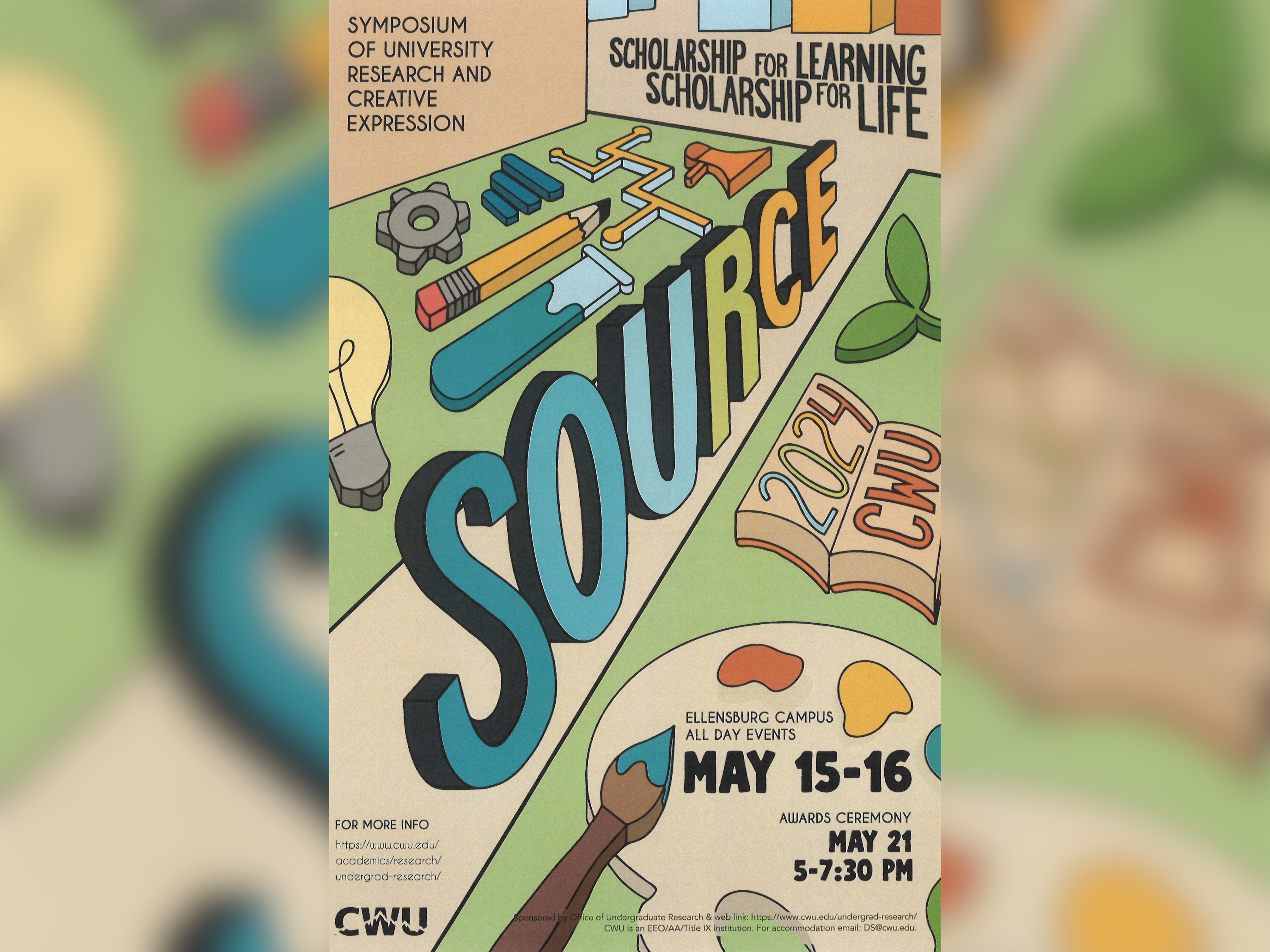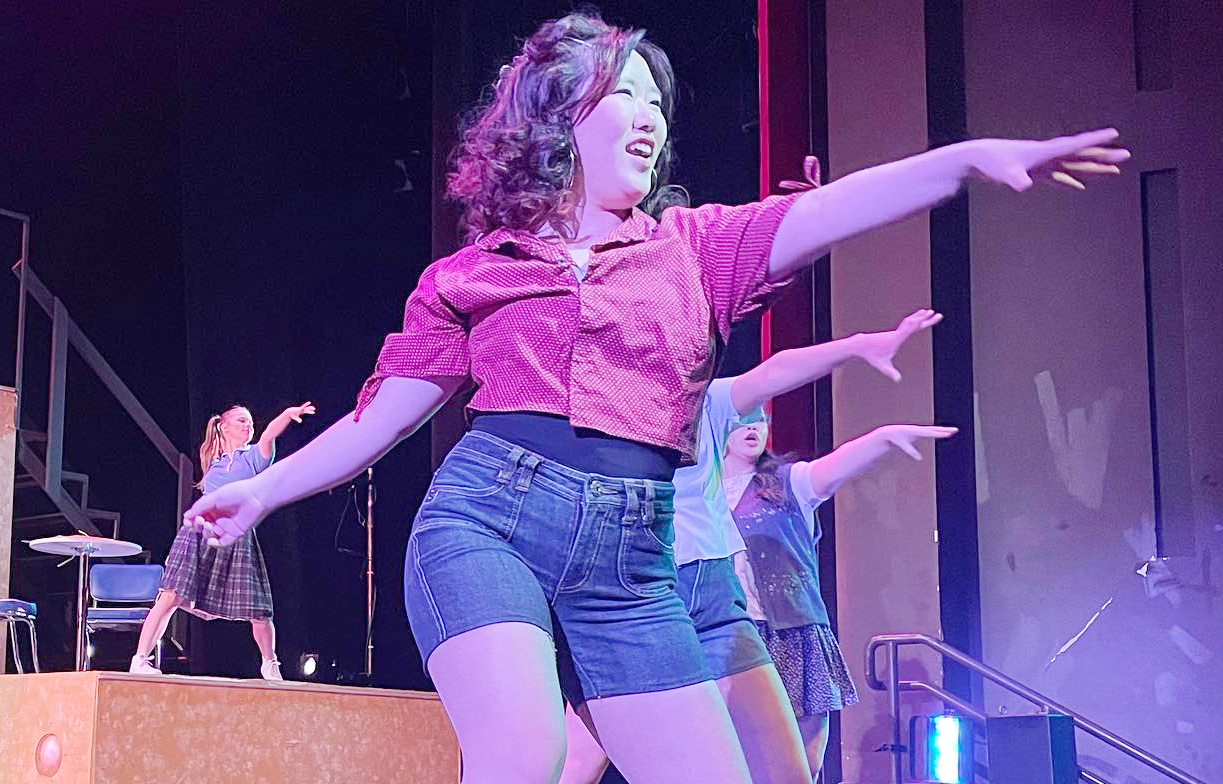
Education Abroad
Virtual WorldCats: International Virtual Exchange at CWU
Alternatively known as, among other things, telecollaboration and collaborative online international learning, virtual exchange leverages technology to connect students with global partners and their students in order to supplement and enhance on-campus learning and facilitate the development of intercultural competency. It can take many forms, including guest speakers, language exchange, global virtual teams and shared syllabi, so instructors have a great deal of flexibility.
Virtual exchange does not necessarily replace education abroad programs. However, we know not every student is able to take advantage of such programs for any of several reasons. Virtual exchange provides a way to expand access to international and intercultural experiences to such students, complementing CWU’s education abroad offerings. Nonetheless, education abroad program directors can also use virtual exchange to enhance their programs.
Within the field of international education, the frequent critique of short-term, faculty-directed education abroad programs has been that their design is often such that students move through a host country or culture without interacting with it substantively. Program directors can use international virtual exchange to facilitate that intercultural interaction or, for those who already incorporate intercultural interaction, to complete the “getting to know you” period prior to departure, thus allowing time in the host country to be used more efficiently.
Implementing International Virtual Exchange
Virtual exchange takes many forms, with varying levels of effort required of the instructor. Brief descriptions of a few examples are provided below. These, of course, are merely possible activities; instructors also are encourage to create their own. Adaptation may also be required based on the needs of the partner.
WorldCat Connections
WorldCat Connections (WCC) are short-term, or otherwise limited, virtual activities that seek to expand exposure of CWU students to international peers, communities, ideas, and practices. WCC can incorporate either synchronous or asynchronous activities or combination of the two. Example activities include, but are not necessarily limited to, panels, book or policy talks, research presentations, case study exercises, debates, performances, business pitches, interviews and tandem language exchanges.
Ensuring Participation
Instructors could determine some way to incentivize participation and be prepared to hold students accountable in real time.
Naturally, factoring these activities into a student’s grade for a credit-bearing course is perhaps the most straightforward and effective way of encouraging student participation. However, non-credit experiences should not be precluded and, thus, may require a bit of creativity.
WorldCat Classrooms
WorldCat Classrooms courses makes use of a form of virtual exchange known as collaborative online international learning (COIL) and offer CWU students the opportunity to participate in engaging, impactful, and easily accessible credit-bearing international experiences. Teams combining students from CWU and partner universities abroad will engage in cross-cultural, project-based, technology-mediated work, aimed at developing global professionals.
How are WorldCat Classrooms courses different from a typical online or distance learning course?
Distilled, the most significant difference comes in the intentionality of design. While regular CWU courses may include our international students among those on the roster, WorldCat Classrooms courses are specifically designed to link students from different geographic and cultural perspectives and not only engage them in the course content from their own perspective but also create a cross-cultural dialogue through the exchange of and reflection upon differing approaches to the topic(s).
Therefore, a WorldCats Classrooms course must be:
- Cross-cultural: offered in collaboration with at least one non-US institution of higher education.
- Virtual: makes use of synchronous and/or asynchronous digital technologies for teaching and learning.
- Project-based: focused on projects with mixed teams of students from all participating institutions, thus fostering international collaboration and interdependence, producing one or more final deliverables.
Formatting a WorldCats Classroom Course
COIL classes can take wide variety of formats. These can include a shared syllabus model, wherein students at each partner—though registered only at their home institutions—have the same content throughout the class and partner faculty essentially team-teach, or a modular model wherein the COIL activities are incorporated into otherwise independent courses. Moreover, faculty may choose to adapt an existing course or take the opportunity to create a new course specific to this purpose. Both the State University of New York (SUNY) COIL Center and the University of Maryland-College Park have databases of actual courses faculty can use as examples and inspiration. Whatever format is chosen, each WorldCats Classroom course should involve at least four weeks of international student-to-student interaction, though longer is preferred.
When starting to develop a WorldCats Classrooms course, faculty are encouraged to consult with their Department Chairs and Deans in order to establish available support and preferred parameters. These will also help guide the eventual negotiations with prospective partners. Furthermore, the hope is that WorldCats Classrooms courses will become repeat offerings and even incorporated into CWU degree programs rather than one-off experiments, and the support of Department Chairs and Deans will be integral to this.
Intercultural Learning Outcomes
Given that WorldCats Classrooms courses are designed to facilitate cross-cultural interaction by their nature, course learning outcomes are highly recommended to reflect this in addition to whichever subject- or discipline-specific outcomes the instructor selects. Below are possible learning outcomes for WorldCats Classrooms:
- Demonstrate the ability to work effectively in international teams.
- Identify the challenges and benefits of international teamwork.
- Be able to articulate commonalities and differences in international perspectives on the subject matter.
- Identify their own cultural assumptions and reflect on how these shape their attitudes and behaviors.
- Apply project management and cross-cultural communication techniques to achieve tangible results in the allotted timeframe.
Digital Technologies
A variety of digital technologies can be used to facilitate virtual exchange activities; below is a non-comprehensive list of suggestions. When choosing your preferred platforms, it is best to establish the learning outcomes and goals for your course first, identify activities that will facilitate that learning and then select the platforms that are suitable. Instructors should also consult with their prospective partners before making a final determination, and they may also want to consider giving students freedom to select platform(s) they prefer for group meetings, etc.
- Zoom
- Skype
- Line
- SnapChat
- Kahoot
- Google Hangouts
- Google Docs/Drive
- Google Duo
- Facebook/Messenger
- Learning Management Systems
- Microsoft Teams
- Animoto
Learning Management Systems
Due to licensing issues, it is not permissible to give non-CWU users, such as partner institution instructors and students, access to the University’s Canvas system. However, should the partner’s/partners’ preferred learning management system(s) not have such a limitation, this could be a viable option for facilitating the virtual exchange activities.
Technology, Language and Equity
As an ideal and a goal, virtual exchange should be based on equitable partnerships, with each partner having equal voice and stake throughout development and implementation. Particularly in the first year of a particular collaboration, there may be challenges that make this impossible to achieve in every aspect of the process; nonetheless, it should be the goal.
The collaboration’s lingua franca is likely to be the most common challenge in this regard; often it will need to be English to accommodate CWU students. When working with partners from countries or institutions where English is not the primary language, this has the potential to put those students at some disadvantage and skew perceived dominance toward the CWU students. In an effort to provide some balance, faculty might consider using the partner’s preferred technologies. In many cases, the interface language can be toggled by each user. Taking this approach provides both groups of students areas in which they may have the superior skills and others in which they are adapting.
Partners
The right partner is vital to the success of virtual exchange, particularly in shared syllabi or similar models. For instance, all parties should be equally committed, engaged and responsive, both to one another and to students. In shared teaching models, this helps ensure as equal a distribution of labor as possible, so that no one individual is taking on the bulk of the work and risking burning out.
Virtual exchange, particularly collaborations falling under the WorldCat Classrooms designation, can create opportunities not simply to adapt an existing course, but also to craft a new course centered on the collaboration and the opportunities it presents. In such cases, the greatest mutual benefit will come with all partners contributing as equally as possible, though, one may need to take a lead role.
Before looking for a partner, it might be beneficial to sit down and think about your goals for the collaboration and how a potential partner fits into and can help accomplish them. How important is it to partner in a specific discipline? Are you able to create a meaningful experience working across disciplines with a partner is a specific country or region? If so, which? How many students will you have, and how many will you need the partner to have? Will you be able to mix undergraduate and graduate students, or will that create certain problems in dynamics?
Various differences in culture and institutional bureaucracy will make keeping an open mind and remaining as flexible as possible very important throughout the collaboration, particularly in the developmental phases. Some partner institutions may be more restrictive of an instructor’s ability to alter syllabi, while other partners might be in countries or regions where internet access is expensive or less ubiquitous than in the US. It’s important to keep this in mind and, at times, be creative to achieve one’s goals and work around these challenges.
Finding a Partner
Multiple pathways exist for finding potential partners for virtual exchange. For instance, instructors may have their own contacts at international institutions that could produce opportunities for collaboration. Similarly, they may be able to send inquiries through professional organizations in their disciplines.
CWU has many partner institutions abroad (see country list below), and the Office of International Studies and Programs (OISP) is happy to assist instructors in reaching out to these partners. Please feel free to reach out to Rachel Gordon or Steve Cook for help in contacting these partners.
Countries Where CWU Has Partners
- Australia
- Austria
- Bhutan
- Brazil
- China (Mainland)
- Colombia
- Cyprus
- Czech Republic
- Ecuador
- France
- Germany
- Ghana
- Greece
- Hungary
- India
- Italy
- Japan
- Macau
- Malaysia
- Mexico
- Mongolia
- the Netherlands
- Portugal
- Romania
- Saudi Arabia
- South Korea
- Spain
- Switzerland
- Taiwan
- Thailand
- Turkey
- United Kingdom (Scotland)
Discussing Collaboration Details
Adapted from those developed by the SUNY COIL Center, a template with an extensive series of questions is available to guide instructors in their discussions with potential partners. The template is designed for each partner to complete and then compare responses as a starting point for discussion. Some of questions may pertain more to WorldCat Classrooms collaborations than WorldCat Connections collaborations; thus, instructors are free to make targeted edits as appropriate.
As mentioned, these questions are quite extensive. Moreover, though efforts have been taken to word questions as neutrally or softly as possible, it may be possible for some to affront based on cultural norms. However, the intent is to facilitate frank and detailed conversations in order to tease out challenges as early as possible and allow each partner to consider how to work around them and evaluate whether the partnership is viable. Therefore, when presenting template to potential partners, instructors may need to provide some introduction or explanation to them.
Example Collaborations
A. E-Pal Project
The Asia University America Program (AUAP) at CWU has utilized this activity in its classes for 8 years as a tool for encouraging its students to use written English through cultural inquiry, though it can be adapted for a variety of disciplines. Institutions in Japan, South Korea and Macau have been past partners.
Participating students communicate via email on topics and a schedule determined by the instructors. At the end of the project, the students submit a reflection, whether a paper or a presentation.
Instructor tasks include connecting and coordinating with the international partner, collaboratively establish the schedule and topics of discussion, collaboratively match students at each institution, and monitor and address issues as they arise. When setting discussion topics, instructors may also want to consider any parameters to establish and communicate to students. For instance, some topics potentially carry serious risks for people in some countries and, therefore, should be avoided. Also, some topics are likely to evoke strong feelings from one side or another, e.g. firearms in the United States; US foreign policy in much of world, particularly the Middle East. Thus, instructors may need to set parameters to ensure these discussions can be had respectfully.
B. Videoconference Project
Similar to the E-Pal Project, AUAP has incorporated this activity into its classes for approximately 6 years, generally collaborating with another CWU department, such as Communication, to match Japanese AUAP students with regular CWU students. As the name implies, rather than discussing the instructor-set topics over email, matched students discuss them over a videoconferencing application, such as Skype, Zoom, etc. Faculty could choose designate a specific application if needed, but it may be better simply to allow each pair or group of students determine which application works best for them.
While these communications are asynchronous in relation to the class sessions, they are synchronous in terms of a given pair or group’s participation. Thus, rather than the instructors setting anything more than a general schedule (e.g. Discussion A in Week 2, Discussion B in Week 3, etc.), the students establish the communication schedule that works for them. As with the E-Pal Project, students submit a reflection at the end.
CWU faculty in Communication, World Languages and Education are working to incorporate this activity into their Spring Quarter 2020 courses, collaborating with partners in Turkey, Japan and Russia.
Additional Resources
- Understanding International Virtual Exchange at CWU (zoom recording; May 22, 2020)
CWU News

CWU to highlight student research at next week’s SOURCE conference
May 8, 2024
by Rune Torgersen

CWU Theatre and Film to present ‘Footloose’ the next two weekends
May 8, 2024
by University Relations
Questions? Contact Us.
Education Abroad
Hebeler Hall 102